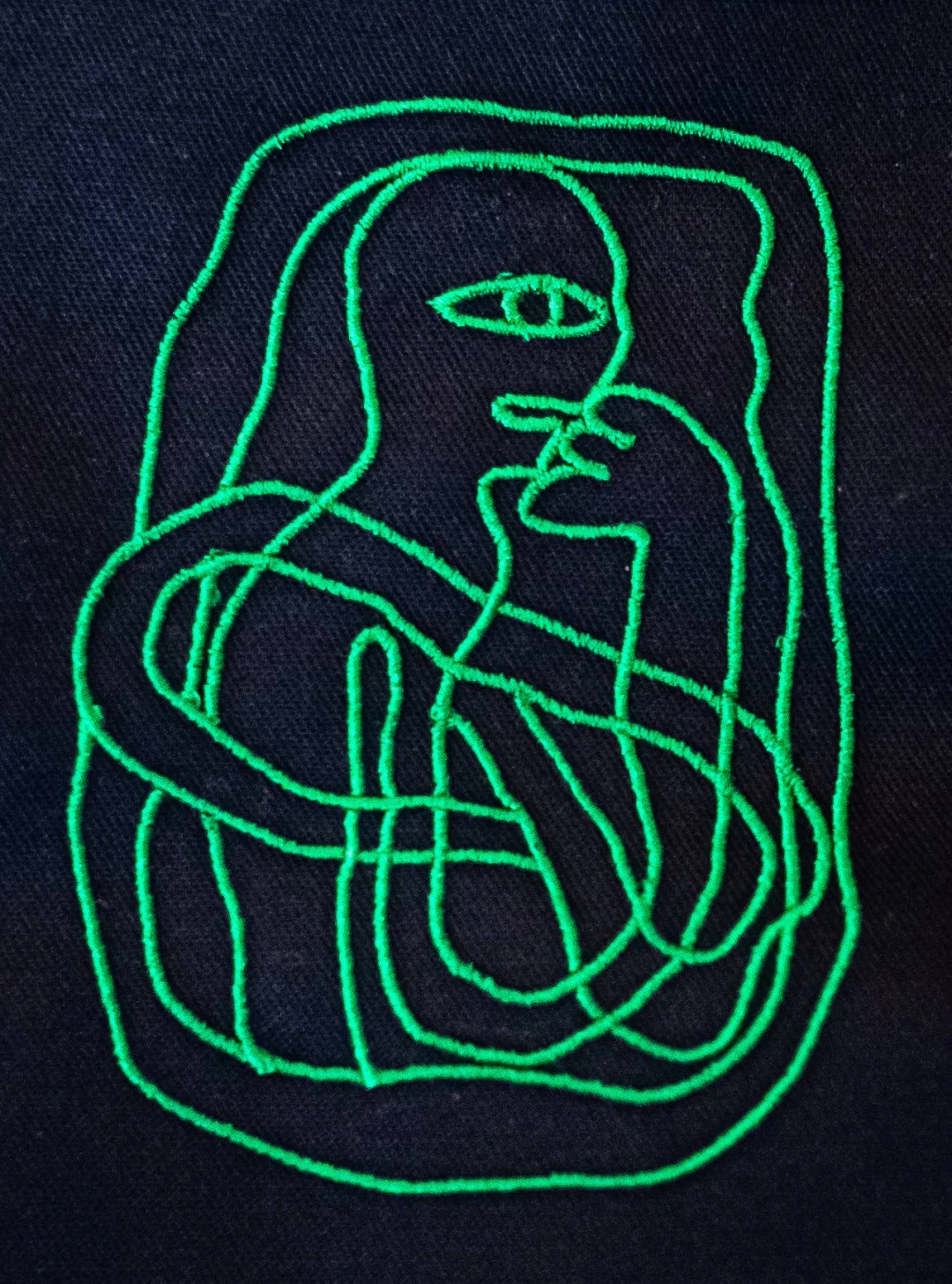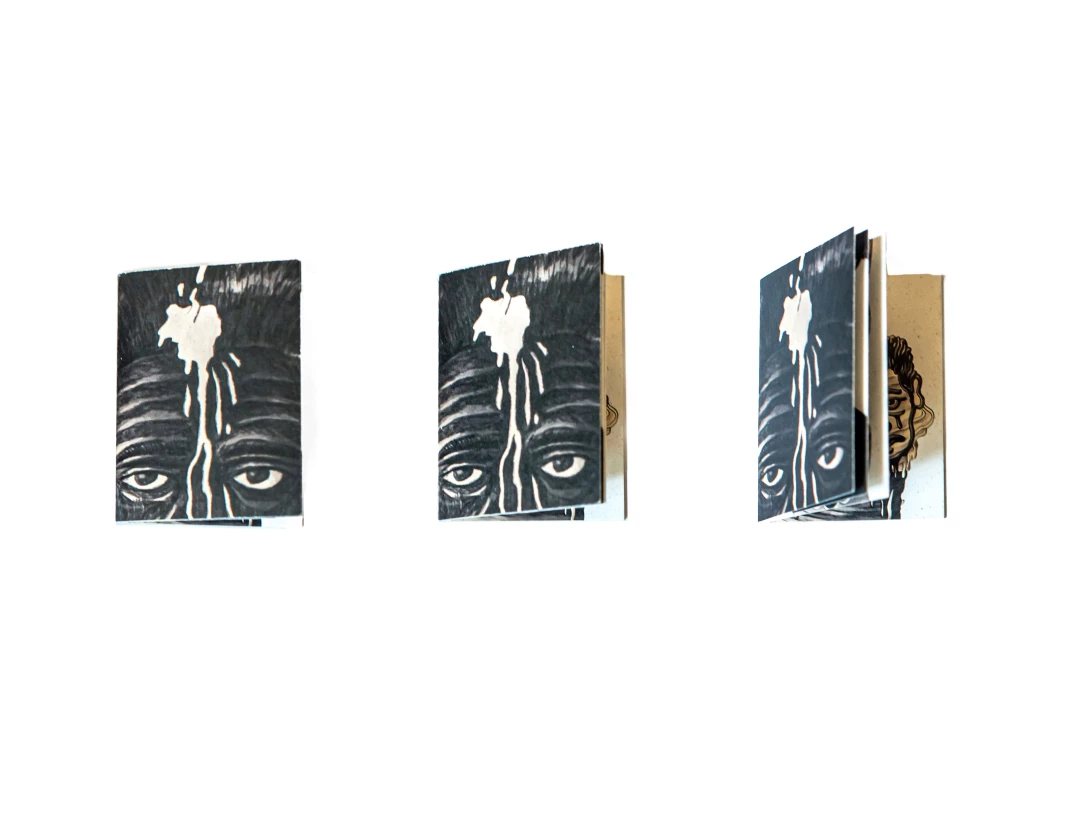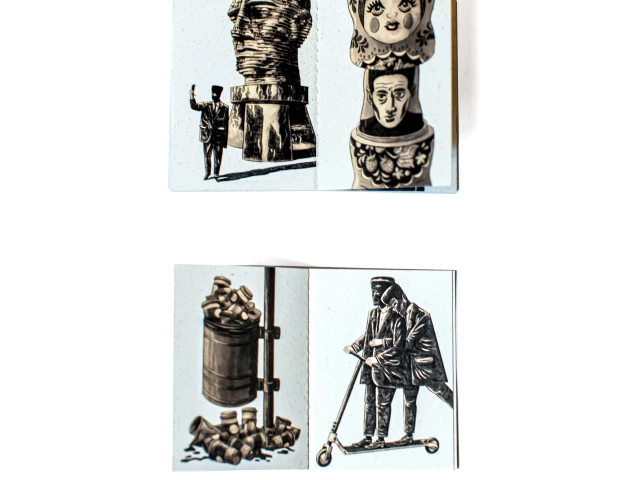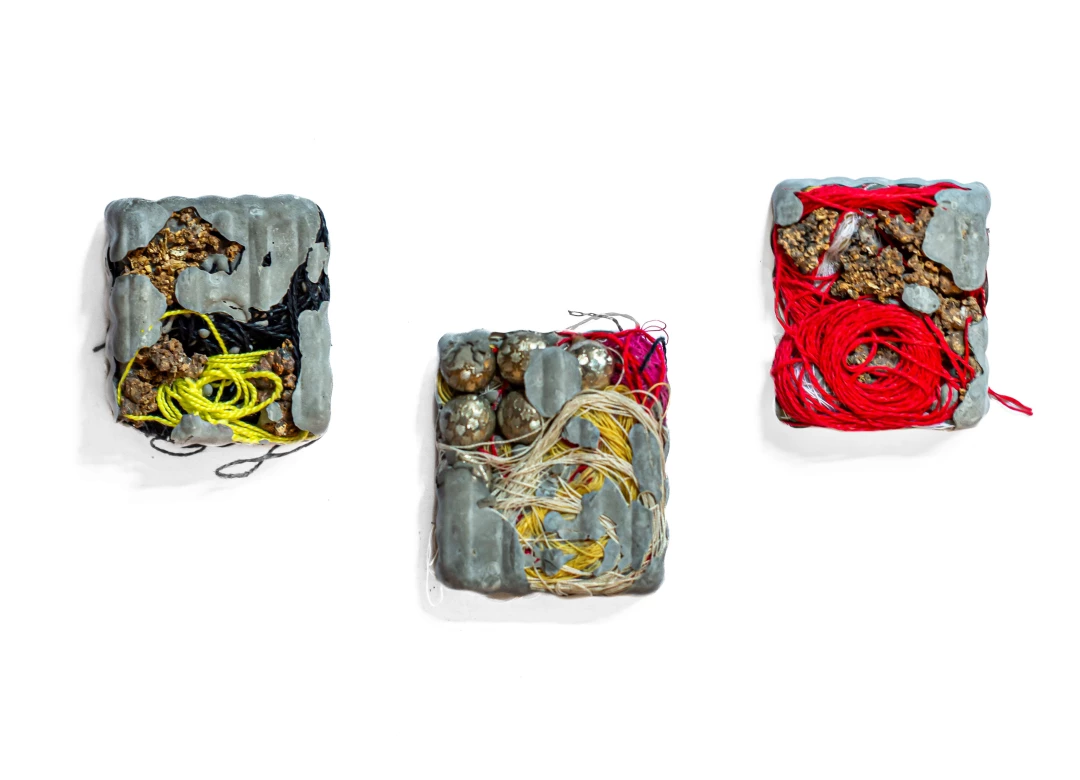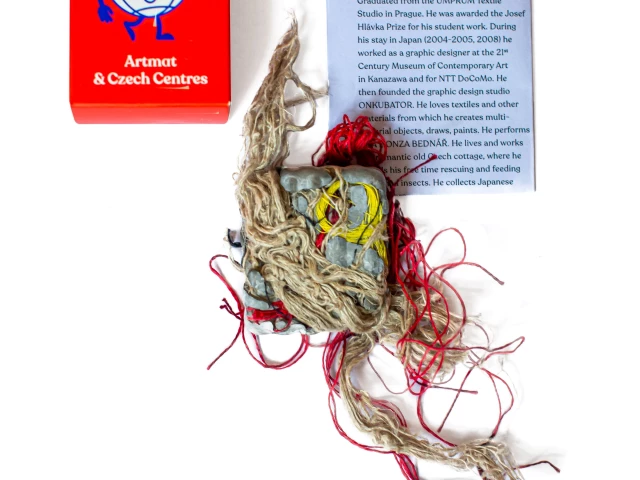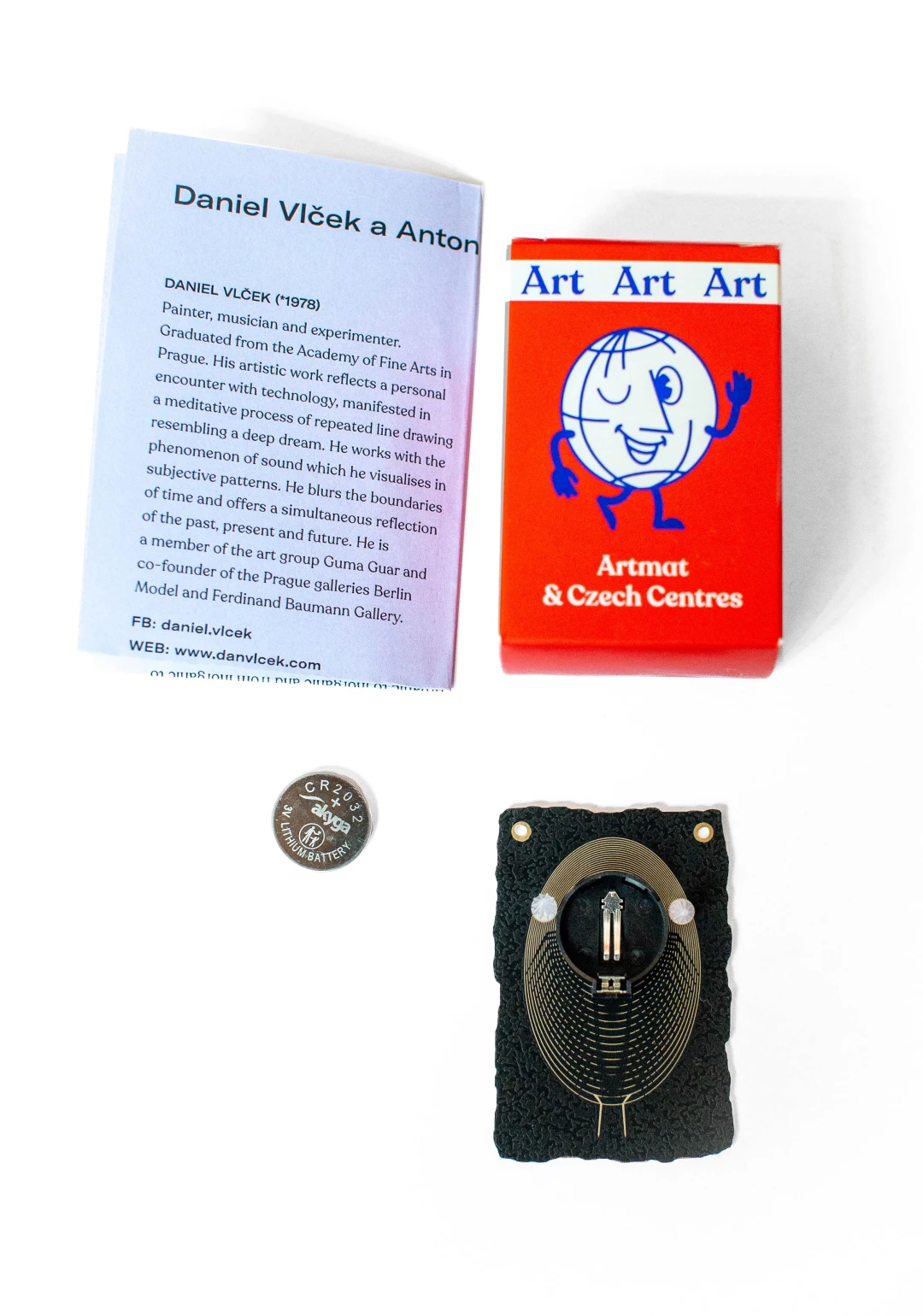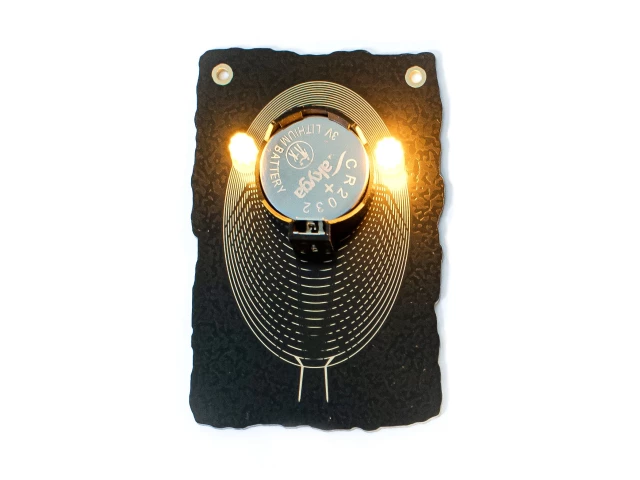Franz Kafka (2024)
A lawyer, an insurance salesman, a vegetarian and one of the most significant writers of the 20th century – Franz Kafka. A world-renowned iconic author whose complex work and rich inner world continue to inspire today. The year 2024 marks the 100th anniversary of Kafka's death and Artmat and the Czech Centres will commemorate his legacy with a special edition of miniature works of art by contemporary Czech visual artists. Together, they reflect on what Franz Kafka means today and what makes his work so fascinating.
Motifs featured in Kafka’s work, such as existential anguish, hopelessness or split identities, intertwined with absurdity and helplessness in his novels and short stories, are relevant even for the 21st century world. This is evidenced by the adjective "Kafkaesque", which is commonly used in many languages to refer to anxious, illogical and strange situations, often in the context of a critical reflection on the bureaucratic system that Kafka extensively covered. The familiarity of Kafka's literary work has also led to the popularisation and appropriation of his ideas, as well as transformation into an unsubstantial icon or tourist attraction.
Artists
The artists invited to collaborate on this edition are Eva Maceková, Tomáš Motal, Ondřej Trnka and the creative duo Daniel Vlček & Antonín Gazda. Their work reflects the ideas of existentialism, inner uncertainty, the multiple layers of the states of being and decadent tendencies. These attributes are also present in Kafka’s works, characterised by an ambiguity of meanings linked to the feelings of isolation, exclusion and the search for justice in a world where, as a rule, one cannot sufficiently influence events surrounding them. The authors perceive their works in a wider context and draw attention to the themes that are often hidden and elusive to them, as is apparent in the Artmat & Czech Centres edition.
Eva Maceková
Illustrator and graphic designer from Slovakia. Graduated from the Studio of Illustration and Graphic Design at UMPRUM in Prague. She is currently based in Prague and her work features a variety of techniques: painting, illustration and graphic design as well as handmade textile work. Her direct style is characterised by strong drawing and colour. She has exhibited in many galleries across the Czech Republic and abroad. She is the author of the children's books including 12 Hours with Oscar (2012), which was awarded the 2012 Most Beautiful Czech Book of the Year Award in the category of literature for children and young people, and Holidays with Oscar (2018).
Crinkum-crankum (appliqué)
Loosely inspired by Franz Kafka’s work, Maceková’s embroidered appliqué has been created in her energetic, nostalgic and slightly decadent signature style. It shows her love of working with textiles, which she creates under the EKL brand.
the webs of thoughts
hugged by betrayal
I move them with the third leg
into a gate hidden in the corner
I can see the end point, in a black hole,
with the northern lights above
Graduated in art carving and from the Painting Studio of the Faculty of Arts of the University of Ostrava. Musician, lyricist and frontman of the Schwarzprior band, occasional actor and author of comics – his main artistic medium – with his drawings and illustrations also based on the comic aesthetics. His work is characterized by a convoluted narrative of ideas, a gloomy, mysterious atmosphere, black humour, irony, dirt and the industrial. An obsession with the bizarreness of humanity, brackish concepts, irony, body horror and white trash aesthetics. His heroes are losers and misguided characters without perspective.
Franz Kafka Disneyland (original minicomic)
Franz Kafka and Prague is a concept. A concept that has been commercially transformed into an empty brand under the onslaught of tourism. A Franz Kafka-themed hotel, a Franz Kafka-flavoured drink, a mug with the image of Franz Kafka, the favourite dessert of Franz Kafka. The short, wordless "comic" is an absurd story about Franz Kafka coming to Prague as a mainstream tourist enjoying all these superficial attractions inspired by his own personality.
Visual artist and graphic designer. Graduated from the UMPRUM Textile Studio in Prague. He was awarded the Josef Hlávka Prize for his student work. During his stay in Japan (2004-2005, 2008) he worked as a graphic designer at the 21st Century Museum of Contemporary Art in Kanazawa and for NTT DoCoMo. He then founded the graphic design studio ONKUBATOR. He loves textiles and other materials from which he creates multi-material objects, draws, paints. He performs AKA HONZA BEDNÁŘ. He lives and works in a romantic old Czech cottage, where he spends his free time rescuing and feeding weakened insects. He collects Japanese teddy bears.
Metamorphosis (object cycle)
A series of original mini objects in a metamorphosis of various materials in diverse shapes. Inspired by Franz Kafka's short story The Metamorphosis, whose protagonist Gregor (after transforming into an insect) they resemble in their shape, the author explores physical transformations which are often linked to emotional changes of other people: "... it is almost astonishing that only a sudden change of shape of the body or face can mean a complete emotional reversal of the inner self, a transformation of love into hate. It is just a detail. Why do we pay so much attention to the outer form and not to the inner?"
Daniel Vlček – painter, musician and experimenter. Graduated from the Academy of Fine Arts in Prague. His artistic work reflects a personal encounter with technology, manifested in a meditative process of repeated line drawing resembling a deep dream.
Antonín Gazda – experimenter, educator, electrical engineer, musician and multimedia artist. He graduated from the Faculty of Electrical Engineering at the Czech Technical University in Prague, where he founded the HLUCH project. He is the face of the Mňau Labs, part of the Noise Kitchen and works with the artist-run initiative Petrohradská kolektiv.
META-Amulet (object)
Inspired by Franz Kafka's short story The Metamorphosis, this reductionist-futurist object is a stylised representation of a trilobite containing a simple electrical circuit with a battery and two LED lights. The work intertwines multiple layers of time, symbolising both a deep layer in which fossilised matter retains the form of prehistoric life, and a layer in which a living organism has undergone a transformative journey and now manifests as a 'stone'. This elegant, symmetrical representation serves as an allegory for the origin of life on Earth and turns into a wearable amulet symbolising metamorphosis – the transition from organic to inorganic and from inorganic to electric, from fossils of the past to fossils of the future.
“…and now he could not even make himself heard by men.”
Franz Kafka, Metamorphosis
